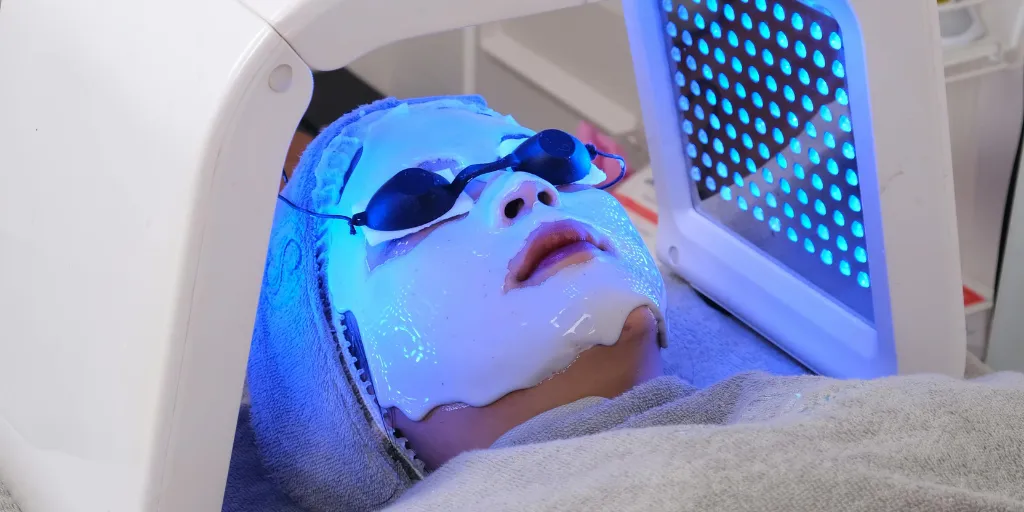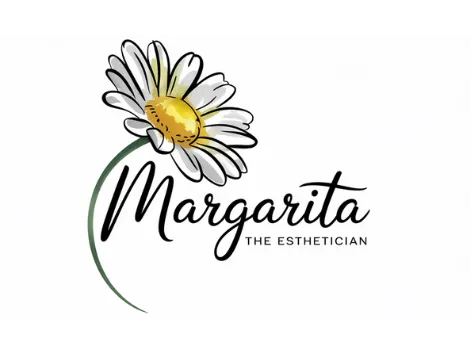
LED Light Therapy Benefits for Fine Lines
At first, it sounds a little sci-fi. Shining colored lights on your face to reduce fine lines and make your skin look younger? But LED light therapy isn’t just a trend—it’s a clinically backed treatment that’s gaining momentum in dermatology clinics, med spas, and at-home routines alike.
Originally developed by NASA to help astronauts heal wounds in space, this gentle, non-invasive technology has made its way into mainstream skincare—and for good reason. LED light therapy doesn’t involve heat, pain, or downtime, yet it’s been shown to stimulate collagen production, reduce inflammation, and improve skin texture over time. And when used in combination with other treatments like Microneedling: Boost Collagen & Smooth Wrinkles, the benefits become even more powerful.
As part of our complete guide on Aging, Fine Lines & Skin Rejuvenation, this post takes a deeper dive into LED therapy—covering how it works, what the research says, how to use it at home, and how to build it into a broader anti-aging skincare strategy.
LED stands for light-emitting diode, and it works by delivering specific wavelengths of light into the skin. Each color of light penetrates the skin at a different depth and stimulates different cellular processes.
Here are the most common types:
Red light (620–750 nm): Increases collagen and elastin production, smooths fine lines, and supports overall skin rejuvenation.

Andrei Orlov via Pexels
Blue light (450–495 nm): Kills acne-causing bacteria, calms breakouts, and reduces oil production.

Erstudiostok via Pixels
Near-infrared (800–900 nm): Reduces inflammation, boosts circulation, and promotes deeper healing.

StockPlanets via Pixels
Unlike UV light, LED light does not burn or damage skin. Instead, it triggers a natural biochemical reaction in your cells that promotes regeneration and healing. Treatments are delivered through flexible masks, dome panels, or handheld wands, and a session typically lasts between 10 to 30 minutes.
What makes LED therapy truly impressive is its zero-downtime factor. You can use it in the morning while drinking your coffee or wind down with it during your nightly Netflix binge.
Developed by NASA: LED light therapy originated in NASA research for healing wounds in zero gravity.
No UV Damage: Unlike tanning beds or the sun, LED light doesn’t emit UV radiation and won’t damage the skin.
Safe for All Skin Tones: It works across all skin colors without triggering hyperpigmentation or irritation.
Great for Sensitive Skin: It’s one of the few professional treatments tolerated by rosacea-prone or reactive skin.
Long-Term Benefits: With consistent use, the results improve over time, not just temporarily.

Red light therapy is the star of the show when it comes to treating visible signs of aging. The red and near-infrared wavelengths stimulate fibroblasts, the essential cells that produce collagen and elastin—the scaffolding that keeps our skin firm and smooth.
Here’s how red light therapy tackles fine lines step-by-step:
Red light penetrates the epidermis and reaches the dermis layer.
It stimulates mitochondrial activity and ATP production—boosting cellular energy.
Skin cells use this energy to repair themselves and increase production of collagen and elastin.
Over time, wrinkles soften, skin becomes firmer, and elasticity improves.
Red LED therapy is more than a one-trick pony. It offers a spectrum of benefits for a variety of skin concerns, making it a versatile staple for anyone building a strong skincare routine.
Additional benefits include:
Reduces redness and inflammation: Ideal for rosacea, post-laser treatment, or chemical peels.
Fades sun damage and age spots: Light energy breaks down melanin clusters.
Improves hydration retention: Helps skin hold on to moisture longer.
Boosts lymphatic drainage and blood flow: Enhances natural detox and glow.
Soothes irritated skin: Safe for sensitive skin types with minimal side effects.
It’s also a great follow-up therapy after microneedling or chemical peels, helping reduce downtime and support faster recovery.
Home LED devices have revolutionized skincare for people who want spa-grade results without leaving their bathroom. However, it’s crucial to pick a high-quality, FDA-cleared product that emits the correct wavelength for anti-aging (630–660 nm for red light).
At-home usage tips:
Cleanse first: Always start with freshly cleansed, dry skin.
Use before serums: Light should hit bare skin to penetrate effectively.
Time it right: 10 to 20 minutes per session, 3–5 times a week.
Be consistent: Visible results take 4–8 weeks.
Post-treatment: Apply a nourishing serum or moisturizer to lock in hydration.
Many users find LED therapy so relaxing they build it into their nightly wind-down ritual. It’s also a great way to elevate your skincare routine if you’re already seeing results from Microneedling.
If you want to amplify your skincare results, pairing LED light therapy with other proven treatments is the way to go. Some of the most effective combinations include:
Microneedling + LED Therapy: Microneedling creates micro-channels in the skin that boost absorption of serums. Following it with red LED therapy soothes inflammation and accelerates healing.
Chemical Peels + LED Therapy: Use LED therapy post-peel to calm the skin, reduce redness, and encourage quicker regeneration.
LED + Hydrating Masks: Apply a hydrating or collagen mask post-LED session to lock in moisture while skin cells are most active.
With so many LED devices on the market, it can be overwhelming to choose the right one. Here’s what to consider before purchasing:
Wavelengths: For anti-aging, red light (630–660 nm) and near-infrared (850–880 nm) are ideal.
FDA Clearance: Look for medical-grade or FDA-cleared devices for safety.
Treatment Time: A good device should offer a treatment window of 10–20 minutes.
Coverage Area: Face masks cover more surface area than handheld devices, saving time.
Customer Reviews: Check real user reviews and before/after photos.
Investing in a quality device can save you hundreds compared to multiple in-office treatments while still offering similar results with consistent use.
For most people, LED therapy is incredibly safe and well-tolerated. It’s non-thermal, free of UV radiation, and gentle enough for even sensitive skin types. It’s been used in clinical settings for decades with minimal side effects.
However, there are some cases where you should be cautious:
You’re taking medication that increases light sensitivity (e.g., tetracyclines or Accutane).
You have a history of seizures or epilepsy.
You use retinoids or exfoliants that may cause irritation.
You have melasma or hyperpigmentation (consult a derm first).
Shine Your Way to Younger-Looking Skin
LED light therapy isn’t magic—it’s science. And when applied consistently, it can create real, visible changes in your skin. Whether you're smoothing out laugh lines, fading dark spots, or simply giving your complexion a boost, this treatment is one of the easiest and most affordable ways to invest in your long-term skin health.
So if you’re ready to treat fine lines with less fuss and more glow, step into the light—and let your skin shine.
This gentle, science-backed therapy works while you relax—and the skin-firming benefits just keep getting better over time.
References for this information:
American Academy of Dermatology. (n.d.). LED light therapy: Everything you need to know. Retrieved from https://www.aad.org/public/cosmetic/light-therapy
Cleveland Clinic. (n.d.). Light Therapy for Skin. Retrieved from https://my.clevelandclinic.org/health/treatments/23196-led-light-therapy
Healthline. (2023). What is red light therapy? Benefits and usage. Retrieved from https://www.healthline.com/health/red-light-therapy
Journal of Photomedicine and Laser Surgery. (2022). Red light therapy improves skin appearance: A randomized clinical trial.


Comments
0 comments